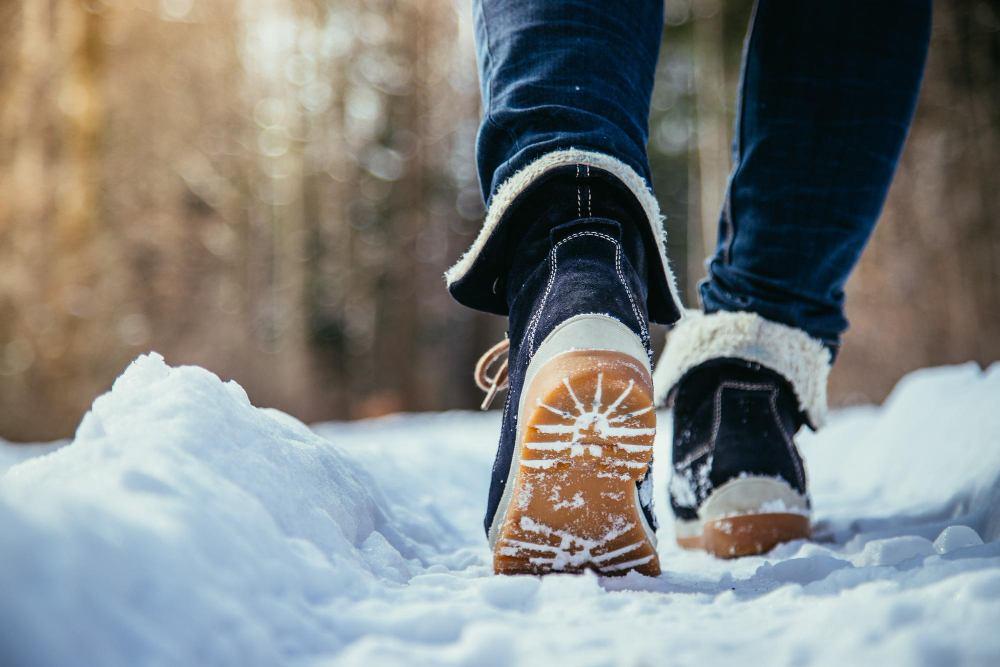Safe Winter Walking
 In the midst of winter’s icy grasp, the idea of venturing outdoors for a walk might seem like a daunting task. The allure of a warm home can easily overshadow the potential benefits of wintertime walking. However, braving the chilly weather comes with a myriad of advantages for both physical and mental well-being. In this article brought to you by Mountain Spring Podiatry, we share numerous benefits of winter walks and provide you with valuable tips to ensure a safe and enjoyable experience.
In the midst of winter’s icy grasp, the idea of venturing outdoors for a walk might seem like a daunting task. The allure of a warm home can easily overshadow the potential benefits of wintertime walking. However, braving the chilly weather comes with a myriad of advantages for both physical and mental well-being. In this article brought to you by Mountain Spring Podiatry, we share numerous benefits of winter walks and provide you with valuable tips to ensure a safe and enjoyable experience.
If you’d prefer a professional one-on-one consultation with a licensed podiatrist, then call Mountain Spring Podiatry to schedule an appointment with a foot doctor today.
The Benefits of Wintertime Walking
We could go on and on with the benefits of wintertime walking, but we’ll cut it short with three primary ones:
- Boosted Mood and Reduced Stress: The cold air and brisk pace of a winter walk can stimulate the release of endorphins, the body’s natural mood enhancers. Engaging in physical activity outdoors has been linked to a decrease in stress hormones, fostering a sense of calm and relaxation.
- Improved Immune Function: Regular exercise, even in colder temperatures, has been shown to enhance immune system function. As you brave the winter elements, your body becomes more adept at defending itself against illnesses, ultimately contributing to overall health.
- Increased Caloric Burn: Cold weather prompts the body to work harder to maintain a stable temperature, resulting in more calories burned during wintertime walks compared to their warmer counterparts. This can be a valuable ally in managing weight and staying fit.
Tips for a Safe and Enjoyable Winter Walk
Before the Walk: Begin with a moisture-wicking base layer to keep sweat away from your skin, add an insulating layer for warmth, and top it off with a waterproof and wind-resistant outer layer. Don’t forget a hat, gloves, and insulated footwear to protect extremities.
Despite the cold, staying hydrated is crucial. The air is often dry during winter, and breathing in cold air can contribute to fluid loss. Hydrate adequately before and after your walk.
During the Walk: Make sure to put on footwear with good traction to prevent slipping on icy surfaces. Consider investing in ice grips or traction cleats for additional stability. Moreover, adjust your walking stride to prevent slipping. Shorter steps provide better stability and control on slippery surfaces, reducing the risk of falls.
Be mindful of exposed skin, especially in extreme cold. Frostbite can occur in as little as 30 minutes in sub-zero temperatures. Dress appropriately and cover all exposed areas.
After the Walk: Change out of wet clothes as soon as you’re back inside. Moisture from sweat or snow can make clothing damp. Changing into dry clothes promptly after your walk helps prevent heat loss and discomfort.
However, avoid sudden temperature changes. Allow your body to adjust gradually to warmer indoor temperatures to prevent unnecessary stress on your cardiovascular system.
Consult with a Licensed Podiatrist
While the allure of a cozy winter indoors may be tempting, the benefits of wintertime walking are too significant to ignore. Armed with the right clothing and precautions, a winter walk can become a rejuvenating experience for both body and mind.
If you have certain foot conditions or deformities, however, it is worth consulting with a licensed podiatrist. Podiatrists are also known as foot doctors, and they have the education and training to guide patients on proper winter walking. Call Mountain Spring Podiatry to schedule an appointment today.
